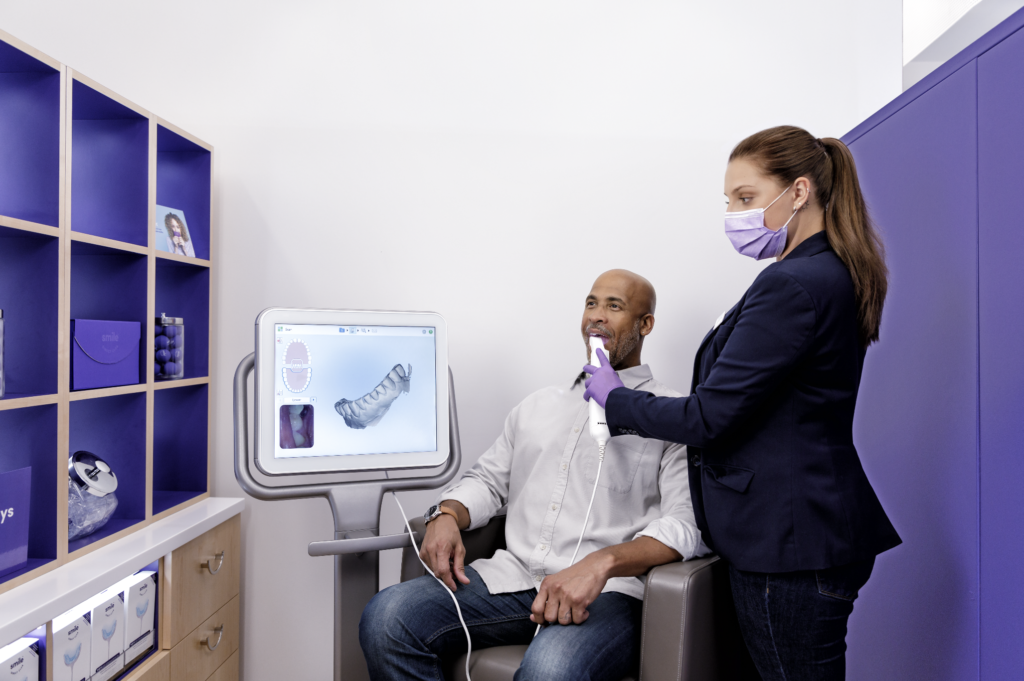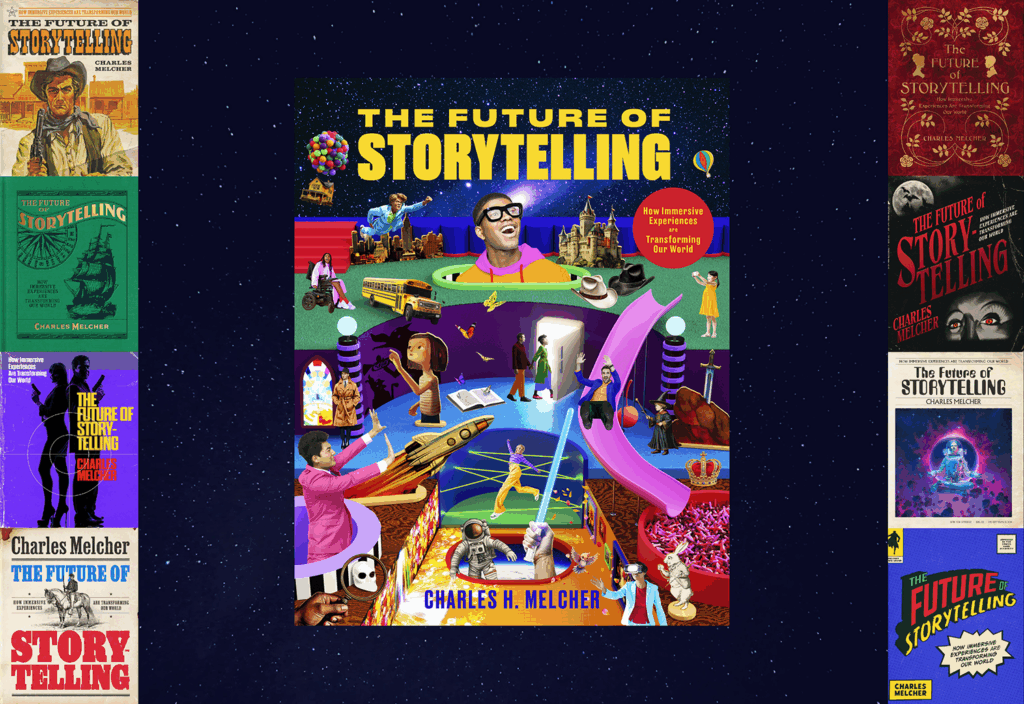Our monthly analysis of the world’s top brands and the marketing moves that are setting them apart.
—
SmileDirectClub, a teledentistry company that helps consumers straighten their teeth through 3D impressions and customized aligners, is based on an important insight: 60 percent of counties in the United States don’t have an orthodontist’s office. Teeth straightening can also be too expensive for the average consumer. So, the company decided to make it easier by bringing the service to them. It’s has been in business since 2014. And about 350 “SmileShops” later, the disruptor brand is poised for additional global expansion.
A quick note before we jump into the brand’s marketing story: Many companies are doing their part to assist the medical community that is currently battling the COVID-19 pandemic. SmileDirectClub is one of them. It’s in the process of evaluating multiple products to create in the marketplace, from face shields to certified masks to swabs for testing. “We’ve dedicated a substantial portion of our 3D-printing facility to be able to help produce them as fast as we can,” says SmileDirectClub CMO John Sheldon. “It’s really critical for us to contribute.”
Customer Experience and Acquisition
Given that it’s a DTC brand, a critical focus for SmileDirectClub is enhancing the customer experience. Recently it has worked to create a more direct connection with the orthodontist that each “club member” is assigned, decrease shipping times for its kits and expand insurance coverage, to name a few upgrades. “We want to bring our customers closer to each other, in community, and have them feel closer to our support and dental teams as well,” Sheldon says. “That means all the ways that we can help them through their treatment, whether it’s tactical—like a lost aligner—or more emotional, as in when they’re having a tough time or they’ve had their first compliment about their smile—maybe ever—and want to share that.”
The brand focuses on its customers’ transformations. So, as it continues to grow and expand, those stories of transformation have moved to center stage from a marketing perspective. “When you’re a transformational brand, it’s your customer stories that really tell what your brand is all about. So, we regularly touch base with our customers, whether it’s just a simple check-in to do NPS scores, and so on. And when they go through their smile journey, they have multiple check-ins with their dental team along the way,” he says. The stories help understand the “why” of what the company does. “It’s just a part of the mix, but it’s important for us to help build credibility and get to the emotional side of these outcomes, which are quite powerful,” says Sheldon.
 It’s resulted in a shift in the brand’s customer acquisition strategy, Sheldon says. “Now that we’re in our fourth year of substantive marketing, we’re starting to shift our customer acquisition messaging. We’re letting our customers start to tell those stories. It’s enabling people who’ve been through this transformation to tell that story, and so we’re using that to open up the top of the funnel and hit new audiences today.” For instance, the brand did an integration with a club member on the TV show “The Biggest Loser” that included a number of video segments. She opens the spot with the declaration that SmileDirectClub changed her life—which sounds more authentic than if the brand itself said it. The company works with other influencers as well, including Sofia Vergara and Brandi Cyrus. In some cases influencers take their followers through the entire journey, which is ideal.
It’s resulted in a shift in the brand’s customer acquisition strategy, Sheldon says. “Now that we’re in our fourth year of substantive marketing, we’re starting to shift our customer acquisition messaging. We’re letting our customers start to tell those stories. It’s enabling people who’ve been through this transformation to tell that story, and so we’re using that to open up the top of the funnel and hit new audiences today.” For instance, the brand did an integration with a club member on the TV show “The Biggest Loser” that included a number of video segments. She opens the spot with the declaration that SmileDirectClub changed her life—which sounds more authentic than if the brand itself said it. The company works with other influencers as well, including Sofia Vergara and Brandi Cyrus. In some cases influencers take their followers through the entire journey, which is ideal.
Data-Driven Marketing
SmileDirectClub uses a marketing strategy heavily informed by data, from investment decisions in advertising to channel testing to crafting creative through its in-house agency. “We use a media mix model to help us think about our quarterly channel investment decisions as well as the multi-touch attribution system for daily and weekly optimizations,” Sheldon says. And recently, the brand has begun to build its own data models alongside the multi-touch attribution system in order to make decisions even more quickly. “Any MTA is going to require a certain seasoning window, but you don’t want to wait to the end of that season. So, we’re building models on top of the early reads that we’re getting through each of our different strategies we have in the marketplace, particularly with digital marketing,” he says.
Within a day or two after running a piece of digital marketing, the brand can start to make decisions based on what it knows will happen downstream rather than based on last click. “Particularly with our aligners, it’s a multi-step process. So, we need to build the ability to predict what that process is going to look like days and weeks out,” Sheldon says.
Data is a religion at the company. “We like to say that we fly the plane by the instruments and the instruments are the data,” Sheldon says. As an example, the brand discovered a new insight recently about the way people think about daily budgets. It learned the new information on a Thursday, immediately re-framed the brand’s smile transformation as costing less than $3 a day, had creative on Friday, did early testing over the weekend and scaled it up on Monday. Now that’s fast.
 SmileDirectClub’s reliance on data and measurement has influenced its decisions about marketing investment. The brand has pulled back its out-of-home advertising spend due to the lack of measurement and has ramped up its investment in VOD and OTT instead. And while the brand has been increasing its spend in these platforms over the past 18 months, Sheldon believes it will continue industry-wide. “I think you’re seeing a shift. This ‘shelter-in-place’ moment that we’re experiencing is going to be a tipping point for a shift from linear TV to OTT and VOD platforms. TV is not going away, but you’re going to see an acceleration of the movement of money over to that OTT and VOD,” he says.
SmileDirectClub’s reliance on data and measurement has influenced its decisions about marketing investment. The brand has pulled back its out-of-home advertising spend due to the lack of measurement and has ramped up its investment in VOD and OTT instead. And while the brand has been increasing its spend in these platforms over the past 18 months, Sheldon believes it will continue industry-wide. “I think you’re seeing a shift. This ‘shelter-in-place’ moment that we’re experiencing is going to be a tipping point for a shift from linear TV to OTT and VOD platforms. TV is not going away, but you’re going to see an acceleration of the movement of money over to that OTT and VOD,” he says.
A Robust Marketing System
The brand’s relationship with customers is highly intimate. Once a customer makes the purchase—which could take up to a full year of consideration—the aligners will stay in their mouths for four to six months. Because of that intimacy, a robust marketing system buoyed by a CRM strategy is critical, Sheldon says. The brand relies on paid social—specifically Facebook and Instagram for reach—and TV advertising to educate the consumer, get them to visit the website and fill out the “smile assessment”—and then CRM does the heavy lifting. “It’s the heart of the system because there are so many places for our consumers to get lost along the way. When they have questions about insurance or, ‘does this work for my type of spacing or gap,’ all of that. We can use CRM to really pull them through the process,” Sheldon says.
Though the brand is still in the developing stages with it, it does use trigger-based direct mail to help consumers along the process as well. For instance, customers might not feel fully comfortable with the brand’s impression kits. “We provide them with a lot of resources to show just how easy it is,” Sheldon says. “We also remind them why they bought the impression kit in the first place.” The messages are often personalized for each prospect, thanks to information provided in the smile assessment. “It helps us understand what their motivations are. Someone might say, ‘I have a wedding coming up’ or a reunion. Or they’re concerned about spacing issues or crowding. In those worlds we customize many of our interactions with the customer, including with direct mail, based on what we learned in that overall smile assessment,” he says.
Next up for the brand? Global expansion. As of February 2020, SmileDirectClub operates in eight markets and is looking to add more. We’ll be watching.





